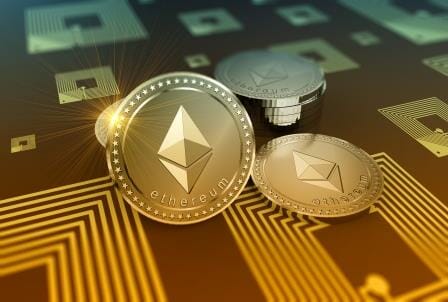The amount of ETH that burns has exceeded the number of tokens issued per day. By the end of August, only 40% of transactions based on EIP-1559 occurred on the network.
Data from Coin Metrics indicates that Ether’s (ETH) annual net inflation rate has fallen to levels around 1% and 3%. The reason is the burning of the native cryptocurrency token of Ethereum implemented with the London fork.
A total of 173,407 ETH worth more than USD 650 million have burned since then, according to Etherscan statistics. That amount represents a reduction of more than 35% of the annual issuance of the coins on that network.
Coin Metrics agrees with that data, noting that the burning of Ether sometimes exceeded its issuance since the update. Experts take that fact as a deflationary signal, as the number of tokens in circulation has decreased.
Although the deflationary trend became noticeable a few days after the hard fork, it has been more apparent in recent weeks. The burning of base rates permanently eliminates the circulating supply, partially canceling the new one.
According to Coin Metrics, if the ratio between total ETH issued and that burned is less than 1, more ETH than issued burns. The burning of Ether has reached that level several times after the activation of the EIP-1559 upgrade.
The Burning of Tokens Helps Make the Network Deflationary
One of the most significant changes introduced on Ethereum with the London fork was the burning of tokens. It is part of the new fee scheme seeking to make the network deflationary and lower high fees.
For that reason, there have been two types of fees since the activation of EIP-1559. The base rate burns every day while miners receive the priority fee to process block transactions faster.
Consequently, the inflation level of the Ethereum blockchain has decreased significantly. However, the reduction in the fees could materialize in the longer term, with the activation of Ethereum 2.0.
A few weeks ago, Coin Metrics said the causes of the low issuances of some ETH blocks include the sales of NFT. Initially, they boosted base rates on Ethereum, but the subsequent burning of tokens contributed to turning some ETH emissions negative.
Those operations contribute to burning base fees and cause gas rates to rise considerably during the minting of NFT collections.
Not All Ethereum Wallets Have Implemented EIP-1559
Priority rates (or tips) have accounted for around 20% to 30% of the total daily fees of Ethereum, says Coin Metrics.
The blockchain analytics firm says that the percentage of priority fees is still low. They expect more wallets to implement EIP-1559 transactions natively.
Coin Metrics observes an acceleration in the daily percentage of transactions using EIP-1559 compared to the legacy fee mechanism. The former has gone from representing 23% of the operations shortly after the hard fork to just over 40% by late August.
In this sense, the percentage of transactions based on the new fee mechanism should continue to increase in the coming months. In that time, the wallets will receive an update for supporting the new format.
By Alexander Salazar











